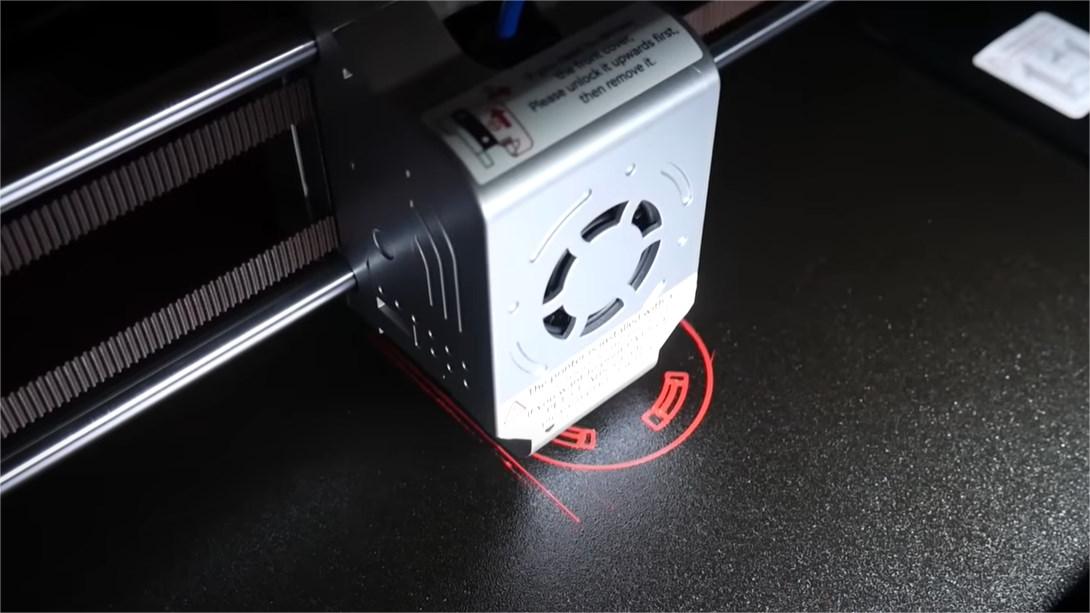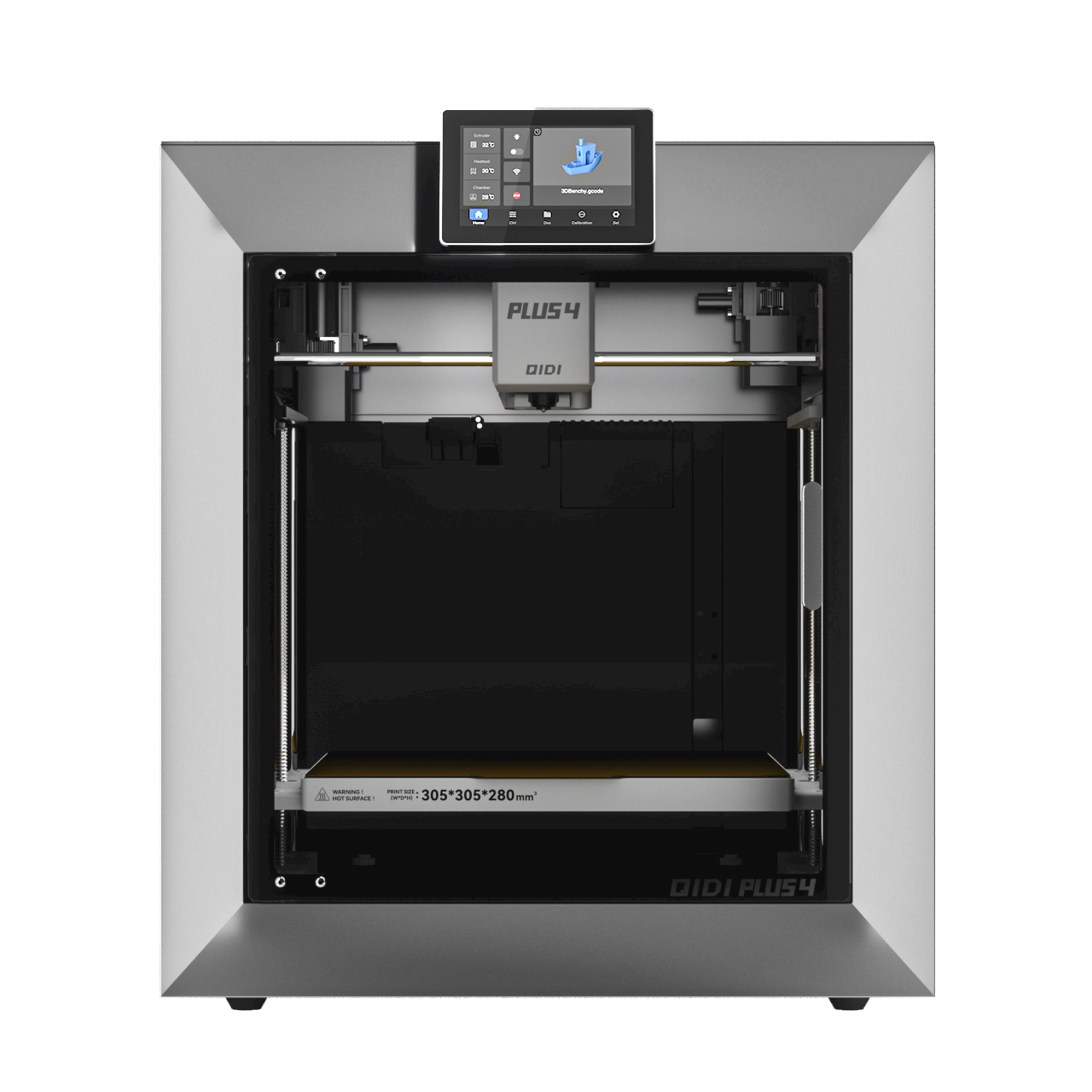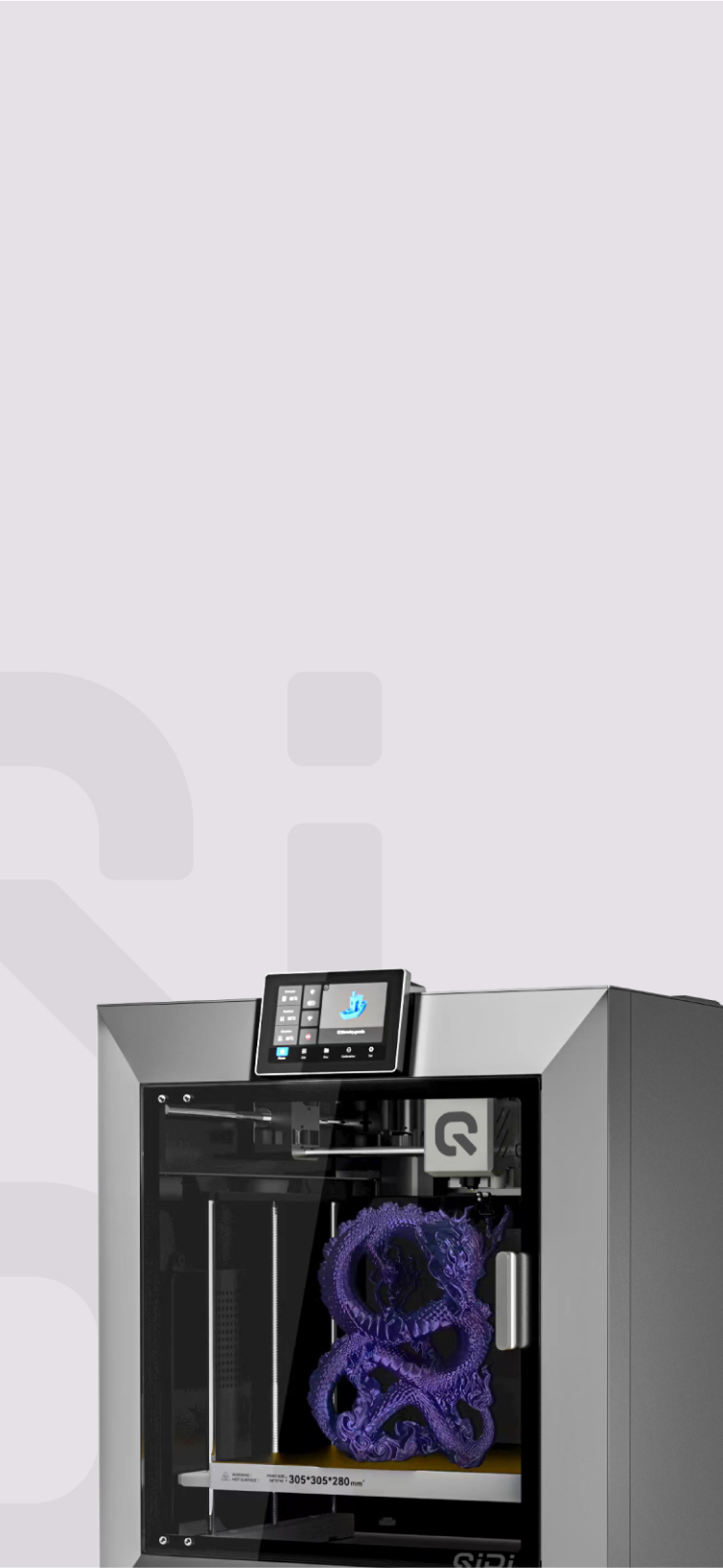How to Clean a 3D Printer Bed


A Quick Answer
| Step | Action | Frequency |
|---|---|---|
| Step 1 | Inspect bed for visible debris and roughness | After each print |
| Step 2 | Scrape off debris with a plastic scraper. | Every few prints |
| Step 3 | Wipe down with diluted isopropyl alcohol using 70-90% IPA and paper towel/microfiber cloth. | When residue visible |
| Step 4 | Apply heat if necessary for stubborn debris using printer's heat. | As needed |
| Step 5 | Deep clean with higher purity IPA for stains using 90%+ IPA and lint-free paper towel. | Monthly or when major issues |
| Step 6 | Handle devices and chemicals safely with appropriate safety gear. | Always |
Note: Avoid using metal scrapers or harsh chemicals like acetone to prevent damage to the printer bed surface.
Introduction
Properly cleaning 3D printer bed surfaces regularly is crucial maintenance often overlooked. However, failing to remove grime buildup, debris particles, and material residues can completely undermine print quality and success regardless of model design.

Problems Caused by Dirty 3D Printer Beds
Specifically, what kinds of issues arise from failing to clean the printer bed? There are a few common ones:
1. Failed Print Attachments
Debris particles filling in tiny bed texturing and gaps prevent models from adhering correctly. This causes the print to detach partway through when the bottom layers let go, resulting in incomplete failed prints.
2. Reduced Print Quality and Strength
Grime residues on the print bed stop proper bonding between vertical walls and top layers as the object prints. Tiny gaps form in the layer alignment, reducing inter-layer cohesive strength. This causes messy prints with poor surface quality, dimensional accuracy issues, and compromised structural integrity.
3. Gradual Printer Part Clogs
Leftover plastic fragments and print debris either fuse into ugly bottom layers of prints or fall off later inside the printer housing. These bits then gradually clog up the printer nozzle, extruder, and other components over time by accumulating.
4. Premature Print Bed Replacement
Dried plastic stuck strongly to the print bed rips up microscopic pieces of the print surface coating itself when forcefully removed after cooling. This pitting and erosion gradually damage print bed glass, tapes, or magnetized plastics, shortening their usable lifespan before expensive replacement is required.
By cleaning regularly, users circumvent these frustrating setbacks rooted in poor first-layer adhesion before they ruin designs outright or indirectly contaminate printers. An ounce of prevention here prevents pounds of headaches down the road.
How Often to Clean the 3D Printer Bed?
So clearly letting print bed grunge accumulate unabated causes grief. But what constitutes a reasonable cleaning frequency? Recommendations vary slightly by use levels, specific printers, and filament properties:
- Light users can get by with monthly deeper cleanings and quick wipe-downs every few prints.
- Moderate users would do well with biweekly deeper cleaning and basic dusting off after each print.
- Heavy usersshould consider weekly extensive scrubs plus compulsory surface tidying between any print jobs.
The key criteria include judging visible debris accumulation, feeling for developed roughness pitting the bed, and staying vigilant following failed print attempts directly attributable to visible obstruction or sudden mid-print rupturing.
Using a Plastic Scraper for Regular 3D Printer Bed Cleaning
For periodic maintenance clearing between print jobs, using a thin plastic scraper makes safely clearing debris straightforward without damaging surfaces, unlike metal alternatives. Here is a gentle process for this regular printer bed refresh:
1. Gentle Cleaning Steps
- Let the print bed fully cool after removing a completed object. Still-hot surfaces risk melting plastic scrapers.
- Hold the scraper angled at a shallow 30 degrees to avoid digging in. Apply light even downward pressure towards one direction and scrape.
- Gradually work across all areas of the bed in a grid pattern to cover everything methodically without focusing excess pressure on any single spot. Just enough force is needed to dislodge material while protecting the coating.
- Inspect from multiple sight angles after going over the entire area to catch any remaining bits. Target just the visibly protruding remnants during this maintenance tidy-up rather than attempting to remove all traces of residue.
- Take a soft dry lint-free cloth across the bed in case any debris chunks got pushed aside rather than fully scraped off during this surface refresh.
Follow these measures after every few mid-sized prints as a quick surface restoration best practice. Skip any visibly smooth areas to minimize wear.
2. Dealing with Stubborn Debris
For really stubborn plastic remnants fused onto the print bed surface, consider these measures before resorting to more caustic chemical measures:
- Repeated shallow angle scraping in multiple directions.
- Heating the print bed slightly to soften the material for easier removal via scraping.
- If the debris pieces remain fully intact, try removing them with needle nose pliers rather than just flattening them onto the bed surface.
Avoid excess force during plastic scraping since some coatings like PEI can get gradually damaged over time with repeated exposure to abrasion or sharp implements. Let heat assistance tackle tricky dross instead of risking harm through brute force alone.
Deeper Cleaning Process: When and How?
While regular basic debris removal maintains quality between prints, more comprehensive deep cleaning is required periodically to revitalize bed adhesion and performance after weeks of use. Here is a general framework for tackling this necessary restoration:
1. Tackling Hard-to-Remove Residues
Schedule extensive printer bed deep cleaning sessions monthly for moderate usage printers at minimum, or straightaway once major debris accumulation, significant roughness or a succession of failed prints likely tied to platform grime builds up. Steps include:
- Wait for total print bed cool-down before starting.
- Removing the print platform from printers allows this based on your specific model. For fixed beds, protect other sensitive components like track wiring with masking tape and paper before wet cleaning.
- Mix a cleaning solution of roughly 90% water with 10% isopropyl alcohol rather than applying alcohol directly.
- Pour a modest amount onto the bed surface.
- Let it soak for 5-10 minutes. This allows the fluid to soften and permeate caked plastic residue.
- After soaking, take nylon brushes, quality paper towels, or microfiber cloths across the platform using moderate scrubbing force to dissolve and mechanically flake away grime.
- Periodically re-wet dry spots for maximum effect during scrubbing then dry the platform thoroughly after concluding cleaning.
- Repeat cycles of soaking and scrubbing as needed until achieving the desired pristine, smooth print bed finish once again. Harsher applications of chemical cleaners or abrasives risk permanent damage, so stick to gentle but thorough manual removal using fluids as a softening tool.
2. Removing Stains with Isopropyl Alcohol
Certain types of deeply set stains may require using higher purity isopropyl alcohol rather than diluted solutions. In these cases:
- Dilute some 99% isopropyl alcohol 50/50 with water.
- Soak pure white paper towels with the mixture then place atop stain areas for about 10 minutes. The paper towels keep wet surfaces isolated.
- Once adequately soaked in, the stains can be cleared away using firm sweeping motions without directly touching the bed.
- Adhere to safety precautions when working with solvents like alcohol and avoid over-application.
The paper towels prevent direct contact with vulnerable print bed coatings until chemical staining rinses away completely. Follow safety steps when utilizing any solvents.
Choosing the Right Cleaning Agents and Tools
In order to prevent damage throughout general maintenance or deep cleaning, stick to appropriate tools and chemical cleaning agents balanced for efficacy versus bed material compatibility:
- For coating-safe cleaning solutions, diluted 10% isopropyl alcohol with distilled water makes an effective utilizing gentler alternative to 100% IPA while avoiding chlorinated tap supplies during dilution.
- White distilled vinegar also offers gentle cleaning power for some print surface types if avoiding alcohol.
- Paper towels work in a pinch but leave behind stray fibers and lint. Non-dyed blue shop paper towels perform better.
- Soft wipe microfiber cloths are ideal choices over traditional fabric rags prone to faster fraying and debris deposits.
- Smooth broad plastic print removal tools or paint stir sticks act as perfect print bed scrapers compared to metal spatulas that gouge polymer, powder-coated, and textured print bed options over repeated use unless perfect technique is employed.
- For scrubbing assistance, soft horsehair detailing brushes paired with solvent/cleaner solutions help displace most debris without unduly abrasion compared to stiffer nylon brushes.
Regardless of which cleaning solutions or tools are selected, techniques matter greatly. Overdoing force or misusing inappropriate supplies exacerbates wear on crucial print bed media. Follow fundamentals, stick to gentle approved choices like 90%+ water diluted IPA, and handle surfaces delicately.

Safety Tips for Repair and Maintenance
Working around electromechanical devices implores acknowledging basic safety steps to prevent avoidable damage or personal injuries:
- Unplug printers before procedures allowing full component removal to prevent shocking hazards or entanglement with moving parts during reassembly.
- Never spray cleaners directly into electronic cavities or mechanical linkages blindly. Use sparingly dampened towels instead for isolated wiping jobs.
- Wear eye protection along with chemical-resistant gloves when handling cleaning agents like alcohol or acids.
- Dispose of used cleaning supplies properly rather than recklessly reusing damaged fraying towels compromising later utility.
Exercising prudent precautions when handling robotics machinery enables users to safely inspect and restore equipment functionality following best practice preventative maintenance habits without incurring significant liabilities. Ignoring basic protocols invites easily avoidable problems.

Don't Overlook Proper Print Bed Cleaning for Optimal Printing
Setting aside a modest increment of schedule maintenance affords to keep 3D printer beds debris-free and optimized for print success rather than risk demoralizing failures. Following fundamental cleaning principles using appropriate tools and methods matters greatly. While rarely exciting, forming basic bed hygiene habits pays tremendous dividends for improved printer lifespan and print quality via sustained optimal thermoplastic adhesion.
FAQs on Cleaning a 3D Printer Bed
1. Can I use rubbing alcohol to clean the 3D printer bed?
Yes, isopropyl alcohol (rubbing alcohol) diluted with distilled water is recommended as an effective and bed-coating-safe cleaning solution for 3D printer beds. Pure isopropyl alcohol can also help tackle stubborn stains. Take safety precautions when handling concentrated alcohol.
2. Do I need to clean my 3D printer after every print?
No, light users may only need monthly deeper cleanings paired with occasional wipe-downs every few prints when residue is visible. Moderate users should clean more thoroughly every other week and dust off any debris after each print. Frequent users should clean weekly and always between prints.
3. Can I use acetone to clean the 3D printer bed?
No, acetone and other harsh solvents risk quickly damaging the print bed surface coating irreparably. For safety, stick to gentle isopropyl alcohol solutions diluted with distilled water when cleaning.
4. What is the best cleaner and cloth to clean a 3D printer bed?
The best cleaners are 70-90% distilled water diluted isopropyl alcohol or white distilled vinegar. Smooth microfiber wipes or high-quality lint-free paper towels are ideally paired with cleaning solutions to effectively displace debris without damaging print beds.
5. How do I keep my 3D printer dust-free?
Keep the printer enclosed, use surface-level air filters, cover it when not printing, and wipe down exterior surfaces with dusting cloths to mitigate dust. Avoid spraying air dusters or liquids directly on sensitive components. Routinely remove any visible interior debris accumulation.


 Q2
Q2
 QIDI Box
QIDI Box
 Plus 4
Plus 4
 Q1 Pro
Q1 Pro
 X-Max 3
X-Max 3

